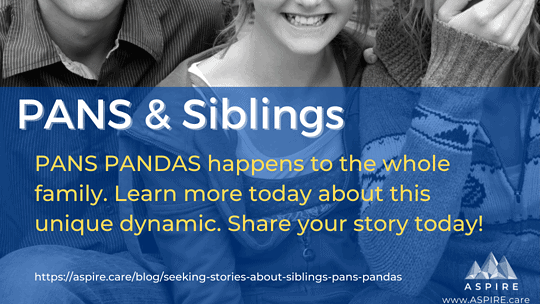
Treating the Aftermath of Infectious Disease
Amongst the speakers will be ASPIRE's Professional Advisory Board member, Nancy O’Hara, MD, MPH, FAAP, and her practice partner Lindsey Wells,...

Amongst the speakers will be ASPIRE's Professional Advisory Board member, Nancy O’Hara, MD, MPH, FAAP, and her practice partner Lindsey Wells,...

I am proud of my journey. It made me the person I am today. I still have a while until recovery, but my progress is enough to motivate me to keep...

Timothy was 10 years old when his personality changed overnight. A concussion during a family ski trip in December 2016 left him unsteady on his feet, but that was just the first sign something was...

I’m sending out gift bags to other kids because I want to help make their experience during IVIg day a little better. If you know of someone getting IVIg, please contact me so that I can send them...

I think the biggest thing you can do for your PANDAS kid is never to give up on them!! Find what works for them and always advocate for their health and education. When someone tells you they cant...

Read about one family's journey of how they handled their daughter's inability to attend in-person school full time and ultimately weaving together a partial in-school and homebound instruction...

Anxiety is a major symptom of PANS and PANDAS. See more about the PANS PANDAS Diagnostic Criteria and Symptoms. Generalized Anxiety, particularly Separation Anxiety, a hallmark...

Share your PANS PANDAS story about how siblings are affected...

Chances are if you have PANS PANDAS, you have experienced issues with sleeping. Learn about reasons why this symptom is part of the Diagnostic Criteria. Come learn about why Sleep...

Sleep disturbances are common in children with PANS and are part of the diagnostic criteria. See more about the PANS PANDAS Diagnostic Criteria and Symptoms Some have trouble falling asleep...

A new onset of ADHD-like behaviors along with other PANS symptoms is one of the possible signs someone may have PANS...

You are being invited to participate in a research study affiliated with the Massachusetts General Hospital, called Investigating the Impact of the Coronavirus Pandemic on Children with...